More about The Garden of Eden with the Fall of Man

Sr. Contributor
Jan 'Velvet' Bruegel the Elder and Peter Paul Rubens are putting on their best Jay-Z/Kanye West style collaboration.
We all know the story, so let's try to frame it from a slightly new angle. God made the earth and first thing he did was open the most exclusive club imaginable: Eden. Great food, even the well drinks were awesome, all day all night happy hour, nice ambiance, even a zoo. Easily 5 stars on Yelp. God invites Adam and, being the great guy He is, makes Eve when his bro gets lonely. And everything was good. Except, God kept his personal stash on premises. Even told his two best customers, Adam and Eve, "Don't touch that. Touch anything else. Put your mouths on anything here. But that's for me, it's what chills me out after a hard day's work." And Adam and Eve kept their hands and mouths off of God's stash. Until Snake came to town. Convinced them to try God's stash of knowledge. Eve first. Got her high on learning. Then Eve got Adam into that special K, and God lost it. Kicked them out of Eden. Put bad feelings between Eve, her kin and Snake for the rest of existence. Also decreed that child bearing would be extremely painful. Adam's punishment was that farming would be moderately inconvenient.
Rubens handled the nudes, the snake and a horse. Velvet took care of everything else, including the great tits (two small birds perched just up and to the right of Eve's raised hand). This sort of arrangement was extremely common in the Southern Netherlands school. Artisans would specialize in genres and then team up to tackle complicated endeavors. Bruegel was known for his greenery and animals and Rubens for his rendering of supple bodies.
Bruegel was emphatic about representing the garden as a physical place. The painting was supposed to feel like the equivalent of a View-Master slide. The garden is replete with about 100 different animals from across the globe, including turkeys newly discovered in North America, capuchin monkeys from South America, and birds of paradise from New Guinea. The bird of paradise depiction was cutting edge science. Up until the time of this painting, birds of paradise were believed to lack feet. Bruegel's inclusion of properly footed birds of paradise was an in your face way of being like, "Scientifically accurate, y'all!," to a 17th century Dutch audience. Imagine how quickly we'd get rid of anti-vaxxers with a simple painting.
Sources
- https://books.google.com/books?id=2R82AgAAQBAJ&printsec=frontcover&hl=e…
- http://www.bbc.co.uk/arts/yourpaintings/artists/jan-the-elder-brueghel
- http://www.artandarchitecture.org.uk/fourpaintings/rubens/two_artists/c…
- http://www.telegraph.co.uk/travel/destinations/europe/netherlands/10924…
- http://www.nytimes.com/2006/12/23/arts/design/23rube.html?pagewanted=al…
- Page 211, https://books.google.com/books?id=iciTSSs1IvUC&pg=PA222&lpg=PA222&dq=th…

Contributor
Jan Brueghel the Elder and Peter Paul Rubens were overly-successful artists in Antwerp, Belgium.
They were good friends. Rubens was godfather to Brueghel’s oldest two kids. While Brueghel did green landscapes with loads of animals and some great still lifes of flowers, Rubens was a people's person and painted splendid human specimens, like the muscular David Slaying Goliath.
Clearly Brueghel took the lead with The Garden of Eden. There are an unfathomable number of animals in the painting (100 by one estimate), and they come from all sorts of mismatched ecosystems. There’s a wild assortment of monkeys, dromedaries, and even an elephant, standing in the middle of a flock of parrots. Since Adam hasn't taken a bite of the damn apple yet, the lion, tiger, and leopard are all well fed and living in perfect harmony with the painting's cattle and deer.
Featured Content
Here is what Wikipedia says about The Garden of Eden with the Fall of Man
The Garden of Eden with the Fall of Man or The Earthly Paradise with the Fall of Adam and Eve (ca. 1615) is a painting by Peter Paul Rubens (figures) and Jan Brueghel the Elder (flora and fauna). It is housed in the Mauritshuis art museum in The Hague, Netherlands. The painting depicts the moment just before the consumption of forbidden fruit and the fall of man.
Adam and Eve are depicted beneath the tree of the knowledge of good and evil, where various fruits grow. On the opposite side the tree of life is depicted, also laden with fruits.
The scene is a reference to Genesis 2:8–14 and hosts a variety of animals, presumably 100, from diverse ecosystems. There is a Capuchin Monkey from South America, hidden to the left, who bites into an apple to symbolize the sin about the be committed by Adam and Eve. Since Adam has yet to commit the original sin, these creatures all live in harmony – a cow peacefully watches while two large cats play. Birds of Paradise are also painted with a scientific accuracy. Up until the time of this painting, these birds were believed to lack feet, and in this painting, they are depicted clearly. This was a modernistic move on Bruegel's behalf.
The monkey next to Adam is the hotspur who cannot resist temptation, while the choleric cat near Eve's heels represents cruel cunning. In Christian symbolism, several grapes in the foliage behind Adam and Eve represent Christ's death on the cross, as wine represents his blood. A plethora of exotic birds such as peacocks and macaws spectate Adam's detrimental demise.
Check out the full Wikipedia article about The Garden of Eden with the Fall of Man

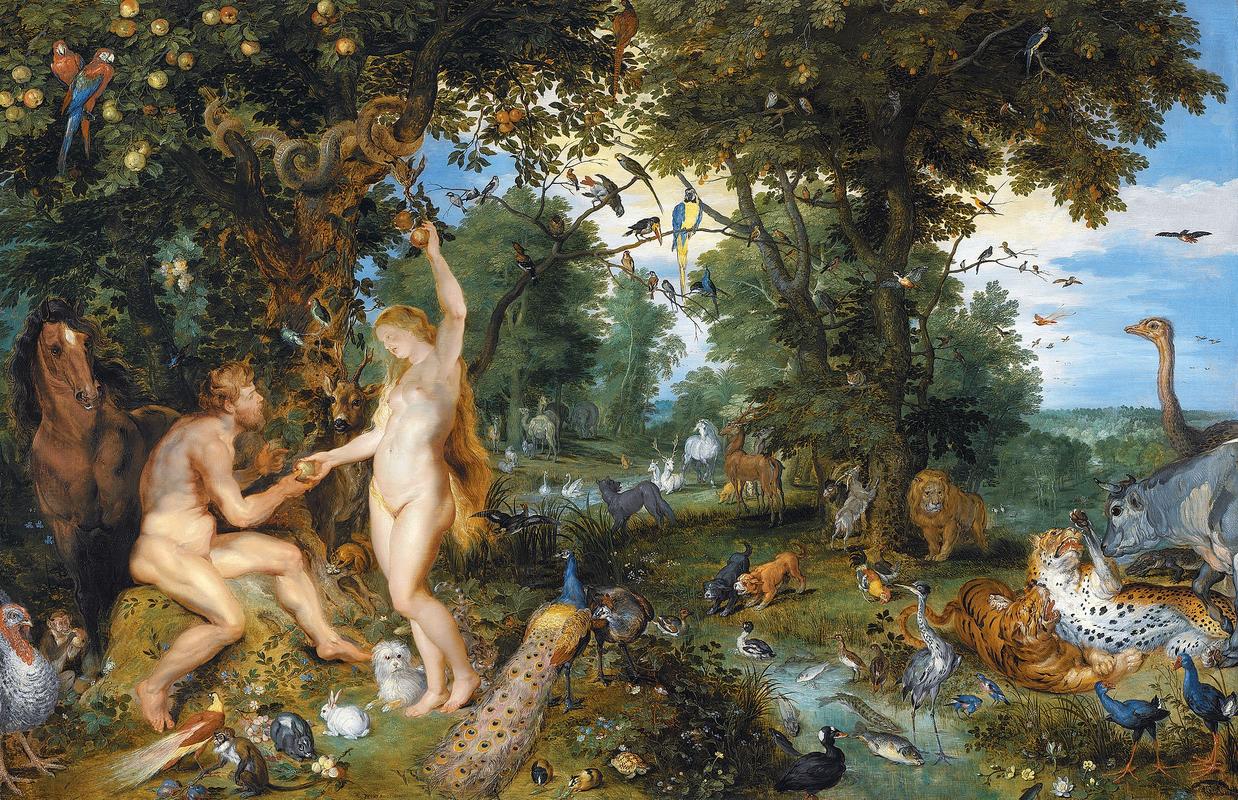
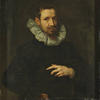












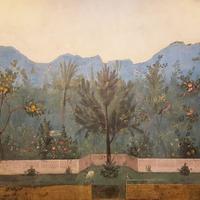
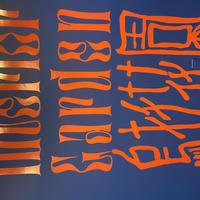
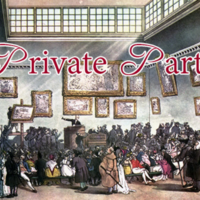
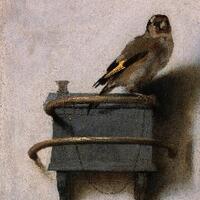
God’s punishment of Adam and Eve according to Clayton: ‘child bearing would be extremely painful. Adam's punishment was that farming would be moderately inconvenient’. Farming is now done from inside giant air conditioned machines. Childbirth? Still pretty painful they tell me.